Tom's Guide Verdict
The Motorola Moto X Pure Edition gives you a Quad-HD display, intuitive voice commands and a solid camera in a supercustomizable chassis at an affordable price.
Pros
- +
Highly customizable, water-resistant chassis
- +
Lovely Quad-HD display
- +
Can be used on any phone carrier
- +
Affordable
Cons
- -
Below-average battery life
- -
Mediocre performance
- -
Grainy low-light photos
Why you can trust Tom's Guide
With the Moto X Pure, Motorola is attempting to cement its place as a major player in the flagship phone market. A device that's just as comfortable on U.S. Cellular as it is on the Big Four carriers, the Moto X Pure Edition starts at $350 ($474.99 as reviewed) and retains the deep customization fans have come to know and love from the phone maker. This phone sports a big, 5.7-inch Quad-HD display, fast-charging capabilities and new, improved cameras. However, middling performance and a short battery life keep the Pure from reaching true greatness.
Meet Your (Moto) Maker
Moto Maker remains one of my favorite features of Motorola phones. Having three options for color on a phone is nice (cough, iPhone and Samsung Galaxy), but that only gives the illusion of choice and individuality. With the Moto X Pure, I was relatively free to create my own look courtesy of the Moto Maker site and its deep well of choices.
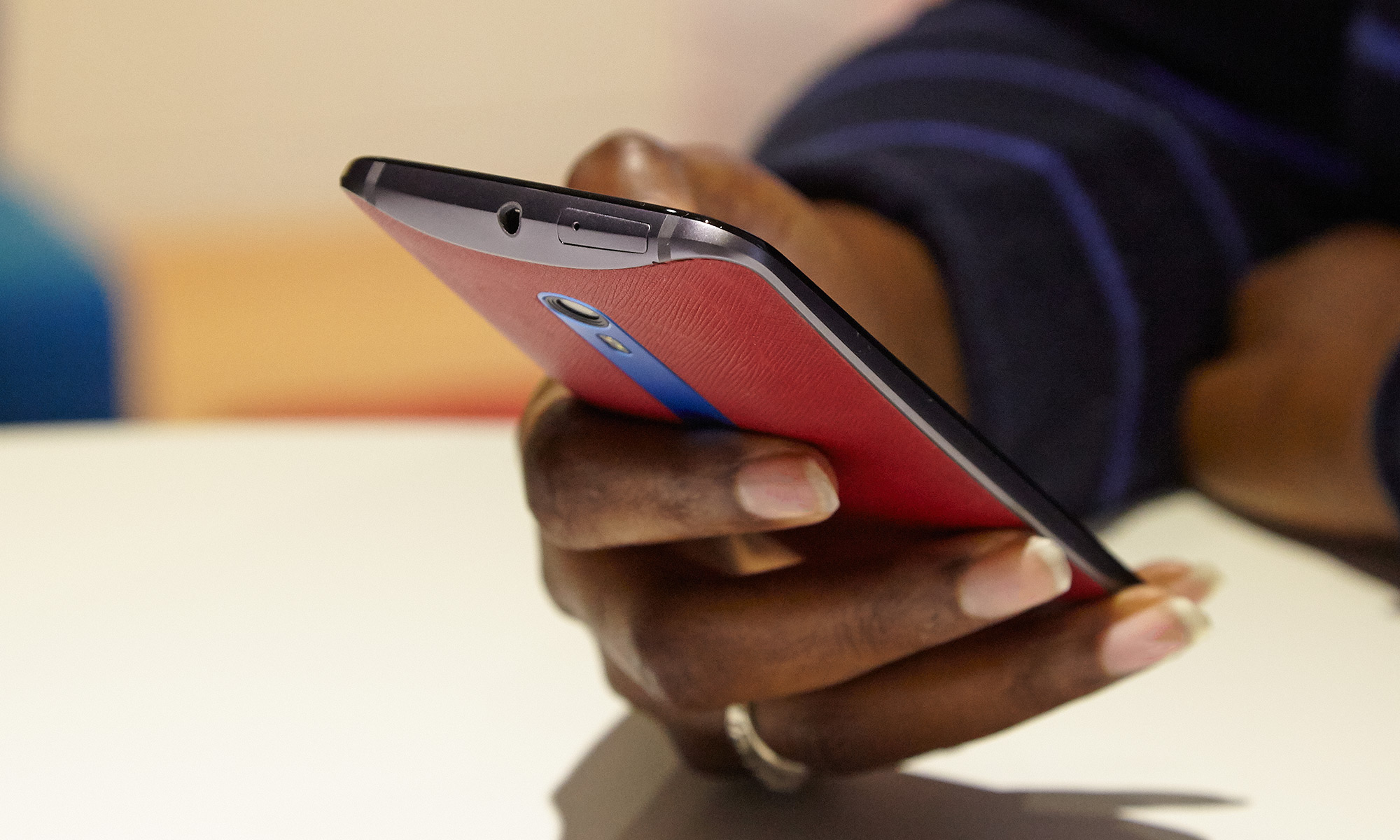
When ordering the phone online, I was taken to a build page where I could configure the amount of storage, frame, rear and front of the phone. Motorola even lets you choose the accent colors, for the speakers and rear camera, which is a nice touch. You can also customize the Moto G and last year's Moto X, but there aren't as many choices.
For the review, I went with the 32GB version, which tacked an additional $50 onto the $399 price tag. (There's also a 64GB option for $100.) Out of the three different color palettes for the phone, I chose a glossy black face with dark grey, aluminum sides.
The Moto X Pure's rear panel is where you really get to make your mark. Moto Maker offers a number of options including silicon soft-touch, real wood and Saffiano leather. You get 10 soft-touch color options such as the default Winter White or more exciting colors such as Lime, Raspberry or Turquoise. Fans of wood can choose from Bamboo, Walnut, Ebony and Charcoal Ash for $25.
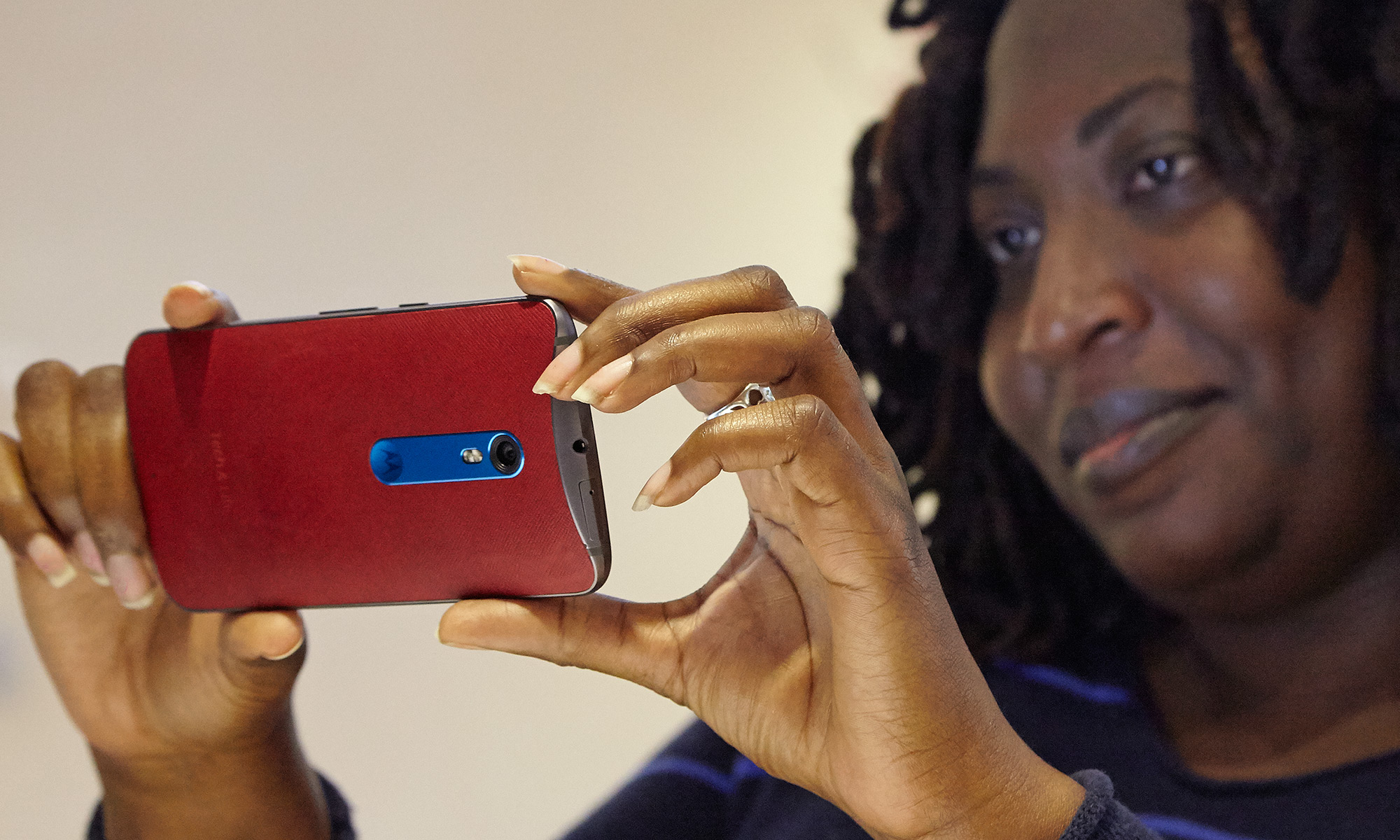
I couldn't resist the siren call of the $25 genuine Saffiano leather, leaving me to make a choice among Natural, Cognac, Black and Red. I decided to be bold and go for red with Metallic Royal Blue accents, as it looked the best out of the seven options.
In order to really make my Moto X Pure stand out, I made use of the free 14-character engraving service to etch "Tech & Life" into the leather. I also chose an 18-character greeting for the first time I powered the phone on.
No matter how you configure your phone, it will be treated with a coating to make it water resistant inside and out.
After a three-week waiting period (with an unexpected delay due to the pope's visit) the phone finally arrived.
Design
The Pure has a pronounced curvature along the rear panel that, along with the delicate cross-stitched leather, creates a steady grip. The aluminum sides are cool and smooth to the touch.
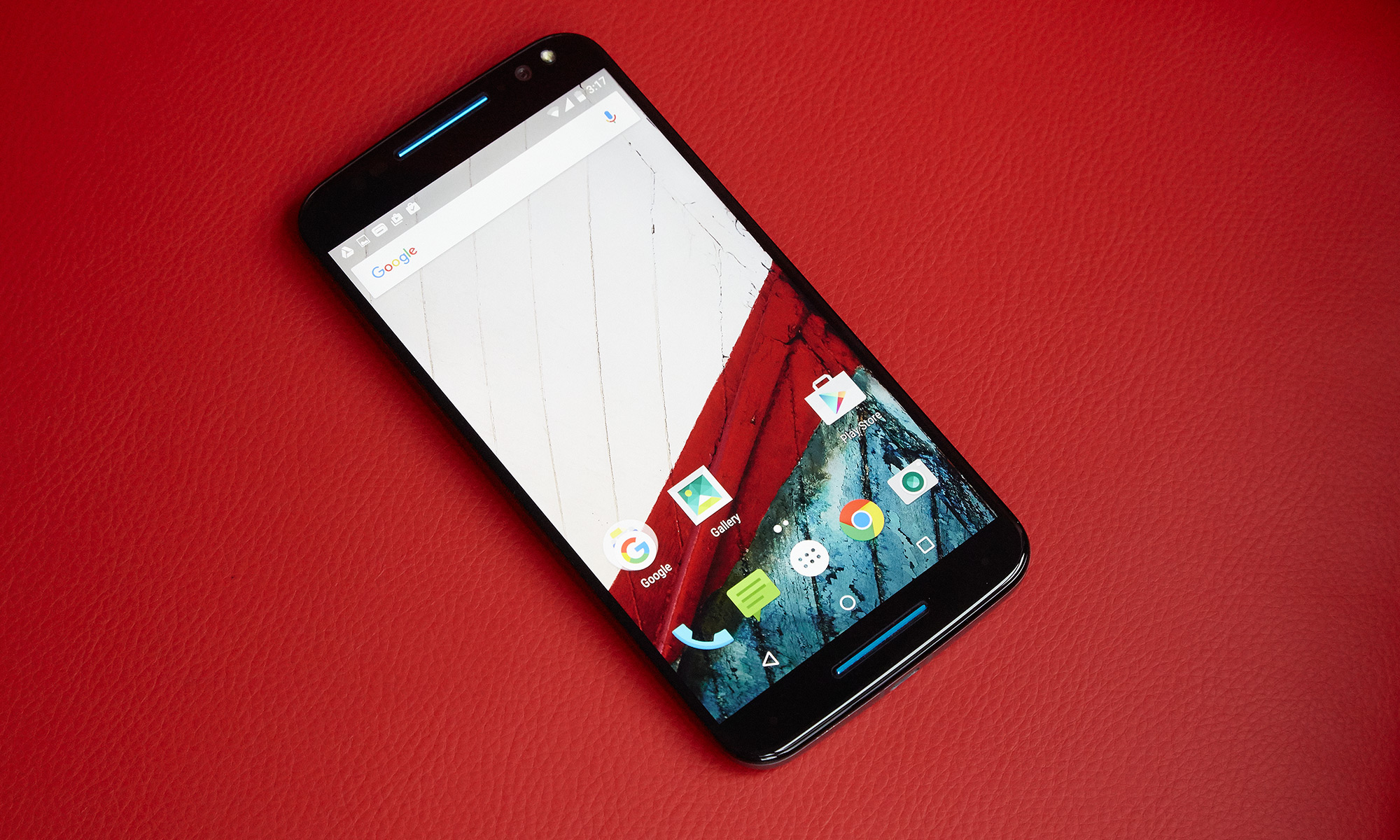
The Moto X Pure is a pretty smartphone, but at 6.3 ounces and 6.05 x 3 x 0.24~0.44 inches, it's got a little more meat on its bones than the competition. The OnePlus 2 (6.2 ounces, 5.9 x 2.9 x 0.39 inches), Samsung Galaxy S6 Edge Plus (5.4 ounces, 6.1 x 3.0 x 0.27 inches) and Asus ZenFone 2 (6 ounces, 6.0 x 3.0 x 0.15-0.43 inches) are definitely thinner and lighter. The Apple iPhone 6s Plus is the sveltest of these phablets, at 6 ounces and 6.22 x 3.06 x 0.28 inches.
Display
Made from Gorilla Glass 3, the Pure's 2560 x 1440p display is beautiful and durable. The 5.7-inch panel delivers deep color with clean detail. Compared side by side with the Samsung Galaxy Note 5 (5.7-inch, 2560 x 1440), the Pure consistently delivered the more accurate color. For instance, during the 4K Suicide Squad trailer, the Samsung's trademark over saturation came into play, adding a bluish tint to the white interior of a speeding car. The Pure, on the other hand, showed off the winter white, allowing the deep pink and purple on Harley Quinn's hair to take center stage.
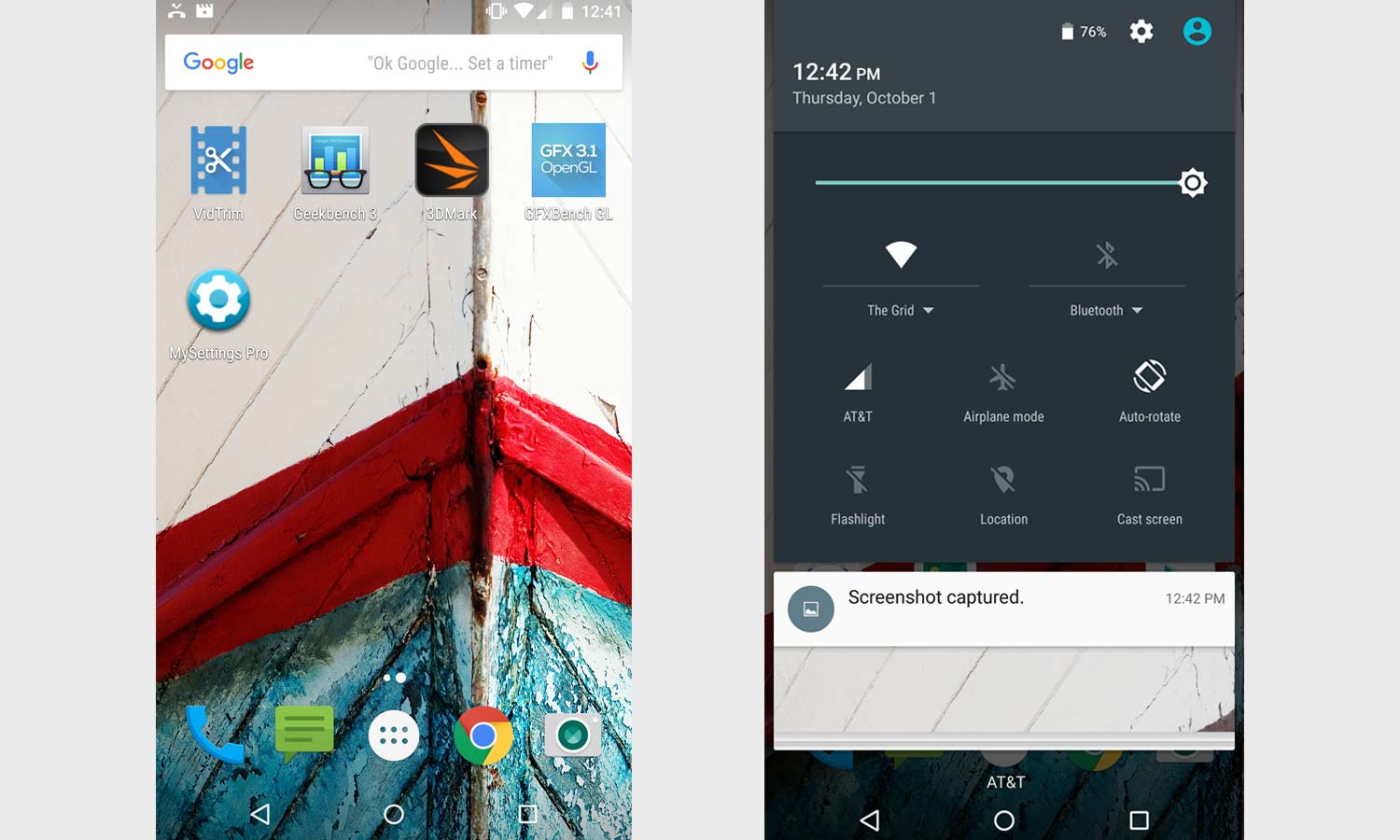
When tested for its color-reproduction capabilities, the Pure achieved 106.4 percent of the sRGB color gamut. That just edges out the iPhone 6s Plus (105.1 percent) as well as the OnePlus 2 (104 percent) and the ZenFone 2 (96 percent). The Galaxy S6 Edge Plus, however, delivered 164 percent.
On our color-accuracy benchmark, the Pure scored a Delta-E of 2.8. That's a little higher than the ideal (closer to 0 is better), as well as the scores of the OnePlus 2 and Galaxy S6 Edge Plus (2.0 and 2.1 respectively), but better than the ZenFone 2's 8.5. The iPhone 6s Plus was the clear winner, with 0.4.
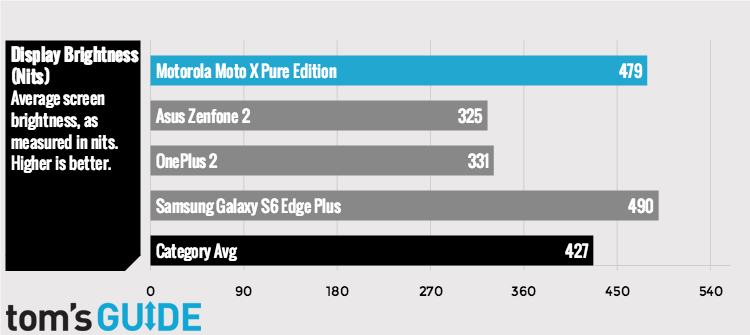
The Pure averaged 479 nits on our brightness test, beating the 428-nit smartphone average, the ZenFone 2 and OnePlus 2, which obtained 325 and 331 nits, respectively. The Galaxy S6 Edge Plus and iPhone 6s Plus were significantly brighter, at 490 and 537 nits.
Audio
The Pure comes with not one, but two front-facing speakers, which can get fairly loud. However, there's still only so much a pair of phone speakers can do. Listening to Tyrese's "Shame," I immediately noticed how quiet the lows were, particularly on the piano.
MORE: Best Smartphones
The lower-octave chords were slightly muted, which made the background singers' soprano sound a bit screechy. The artist's tenor was warm and inviting and when paired with higher piano chords, accentuated the timbre of the string instrument.
Interface
Motorola's stock Android 5.1.1 (Lollipop) interface is like vanilla bean to Samsung TouchWiz's rocky road. It doesn't have all the add-ins, but it's tasty nonetheless. Icons such as Gallery, Drive and Messaging are large, colorful and overall more approachable thanks to Google's Material design. Open tabs are arranged like index cards in an old-school Rolodex for swift navigation after pressing the Menu button.
A quick downward swipe reveals the Settings and Notifications shades. I like the straight-to-the-point presentation of the Settings shade. The available settings (Wi-Fi, Bluetooth, Network, Airplane Mode, Auto-Rotate, Flashlight, Location and Cast Screen) are front and center with large icons, while Brightness is represented by a large slider. Notifications are represented by small cards that can be dismissed by sliding to the right or left.
Hello Moto: A look at brand-specific features
Just because Motorola doesn't drown its interface in heavy skins doesn't mean this phone doesn't have its own set of bells and whistles. However, Motorola focuses on automating a lot of little functions. First, there's Moto Voice, which allows you to activate your device by uttering a simple phrase. From there, you can command the phone to perform a number of tasks including posting to Facebook, sending a text message or taking a selfie.
The Moto Actions feature lets you use gestures to perform certain functions on the phone. For example, performing two highly exaggerated chopping motions with the phone will turn the flashlight on or off. It definitely takes some practice, as I had do it four to five times with varying degrees of force before I got it to work. Launching the camera by quickly twisting the phone in your hand was much more responsive. Still, I can't envision people doing judo chops to turn on the flashlight.
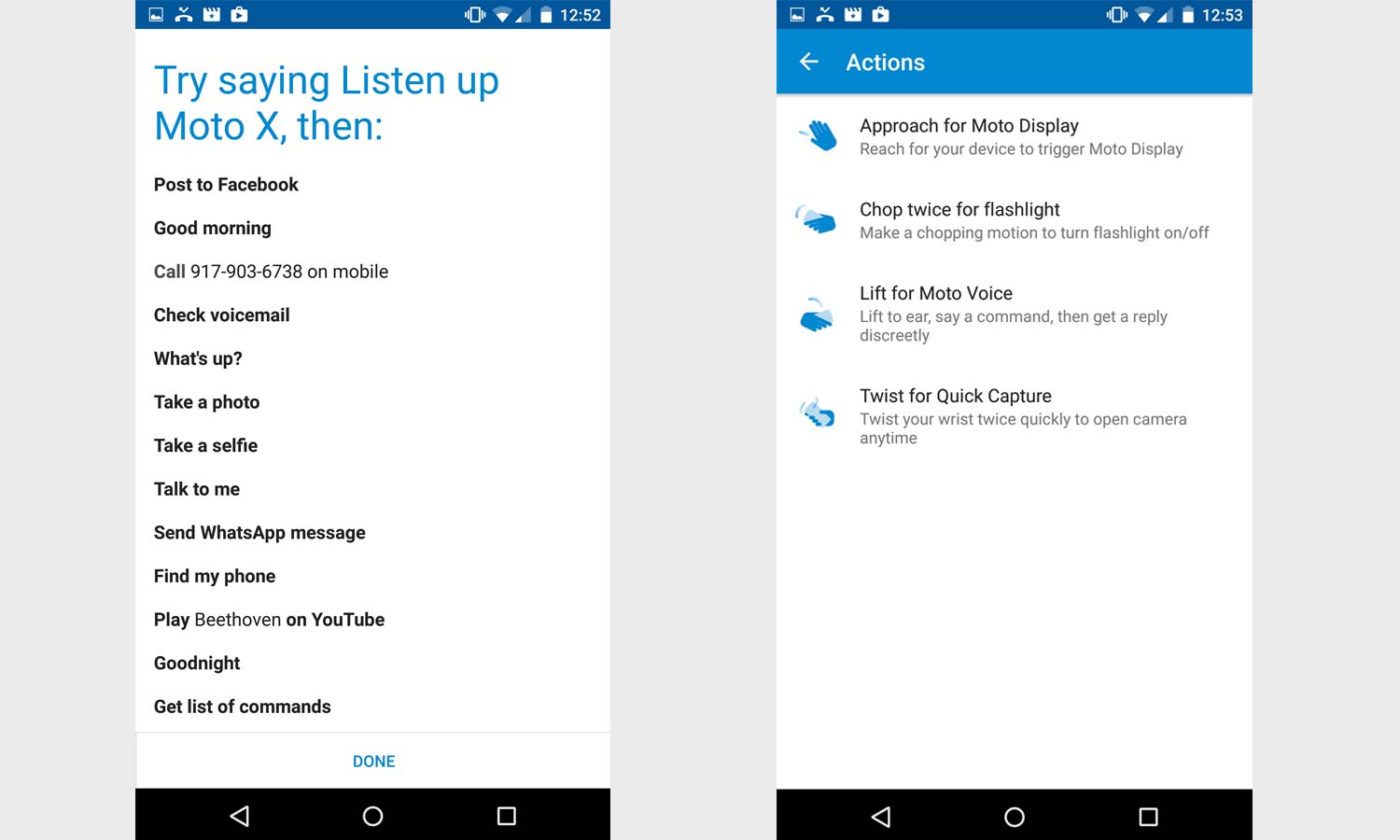
You can also check the time or recent notifications without unlocking your smartphone by using the Moto Display feature. Once this feature is enabled, waving your hand over the phone causes the panel to quickly flash the clock as well as missed calls, new emails or text messages.
Aside from training the Pure to recognize your voice, you can also teach it how to behave in certain situations using the Moto Assist feature. If you're in a meeting for example, you can create a list of rules and actions for the phone to follow, such as switching over to vibrate and sending a canned text message to important missed calls.
Passable Performance
The Moto X Pure Edition is an agile customer, but it's not the most powerful smartphone out there. Switching between a YouTube video and Asphalt 8: Airborne with several apps running in the background was a breeze thanks to the phone's 1.8-GHz Qualcomm Snapdragon 808 processor. The hexa-core chip and its 3GB of RAM took less than a second to open the camera, and snapped photos almost instantaneously.
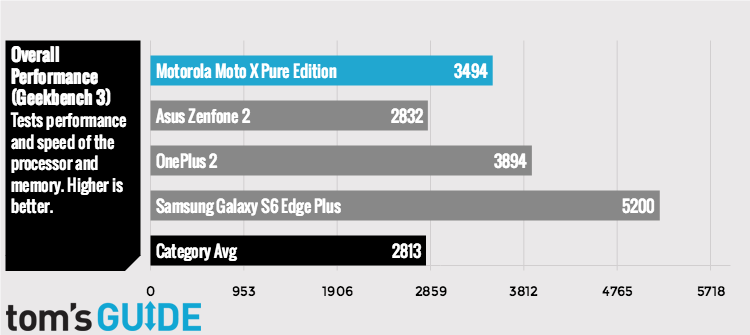
The Pure delivered some passable marks on our synthetic testing, scoring 3,494 on Geekbench 3, which measures overall performance. It was enough to top the 2,829 smartphone average and the Asus ZenFone 2's quad-core Intel Atom-backed CPU (2,832). But it couldn't topple the Samsung Exynos-powered Samsung Galaxy S6 Edge Plus (5,200), the iPhone 6s Plus with its A9 CPU (4,405), or the OnePlus 2 and its Snapdragon 810 processor (3,894).
On the video-editing test, the Pure took 3 minutes and 51 seconds to convert a 204MB video from 1080p to 480p, which is much faster than the 6:14 average. It's also better than the OnePlus 2's time of 5:38 as well as the Galaxy S6 Edge Plus' 4:17. The ZenFone 2, however, completed the task in a faster 3:40.

As I tore up the track on Asphalt 8, I had enough time between turns to take stock of the beautiful blue sky and the subtle striations in some nearby rock formations rendered by the Pure's Adreno 418 GPU. At least I thought I did, since the minute I took my eyes off the road, I crashed into a road divider, causing the hood of my red Dodge Dart GT to crumple and the windshield to crack.
When we ran the graphics performance test, the Pure achieved 19,842, passing the 14,806 average. That wasn't enough, however, to top the iPhone 6s Plus' score of 27,295 or the Galaxy S6 Edge Plus' 22,901. It also couldn't hold off the OnePlus 2 or the ZenFone 2, which scored 21,507 and 20,588, respectively.
Cameras
Motorola has stepped up its camera game. We dinged last generation's Moto X for poor color reproduction, but not this time. The 21-megapixel rear camera produced images with sharp detail and luminous color.
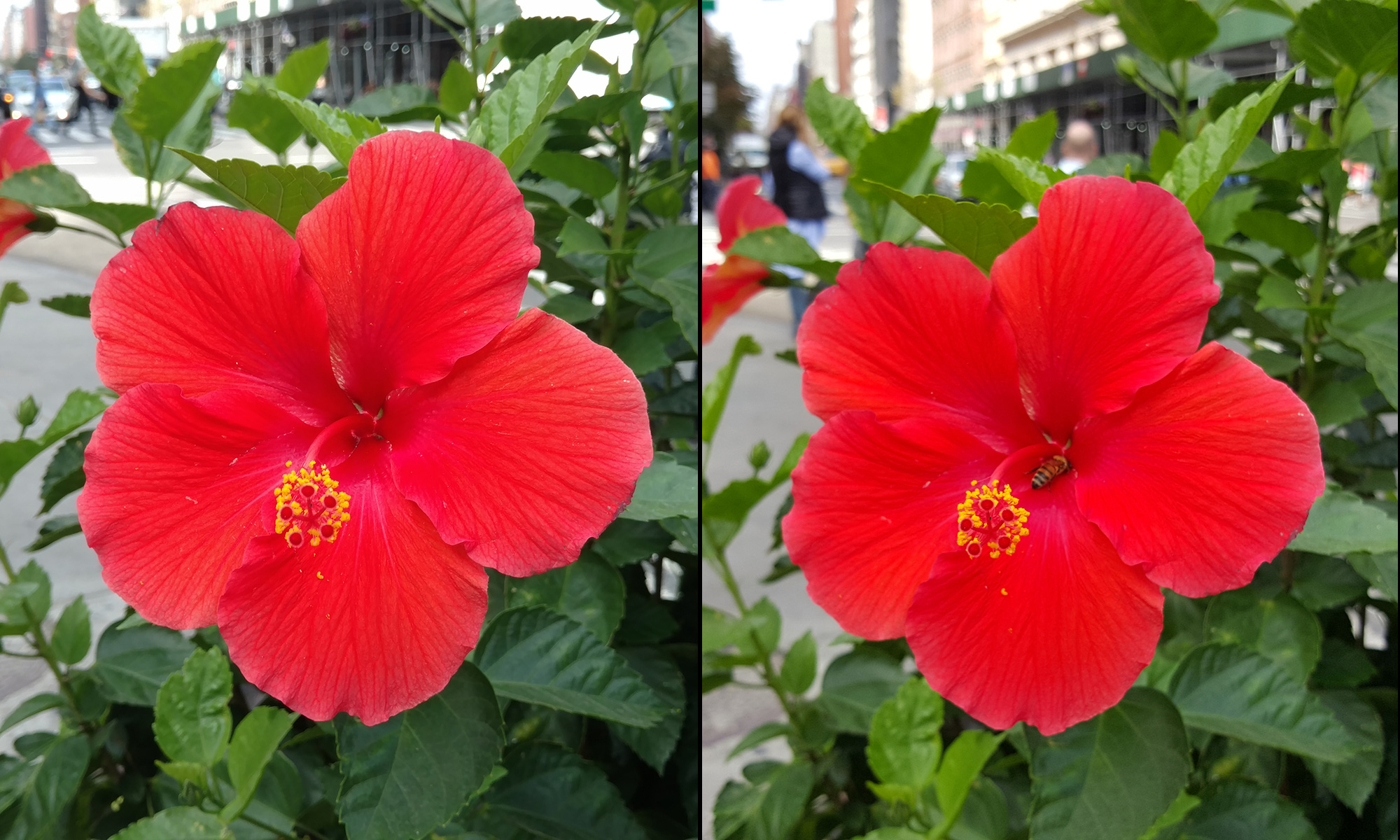
In our test shot of a red flower, you can clearly see the veins running the length of the flower as well as the few pieces of pollen resting on the bottom petal. The red is deep and rich, especially as your eye works toward the interior of the plant. It's a great photo, but the Galaxy S6 Edge Plus is slightly better, producing a more vibrant red and just a bit of more detail on the petals, particularly the right petal where you'll see a bit of decay.

Taking an image in good lighting is fairly simple, but low-light shots can confound even the best smartphone cameras. When we used the rear camera on the Pure to capture a shot of a small green statue, the resulting image was rather grainy and difficult to make out compared to what the S6 Edge Plus produced. That photo was definitely very yellow, but had better exposure, with finer detail.

I attempted a group photo in a dim room with the front camera and was disappointed to see that without flash, I could barely see myself, save for the whites of my eyes and teeth. This was quickly remedied by employing the front-facing flash, a feature that more smartphone manufacturers should implement. But sans flash, I preferred the shots taken by Galaxy S6 Edge Plus. Although I'm darker than normal in those photographs, I'm still visible in the frame.
The Pure can capture video in both 1080p and 4K resolution at 60 and 30 fps, respectively.
Test video of New York City traffic on an overcast day was filled with lavish hues and crisp detail. The yellow taxis were the highlight of both videos, as the cars appeared even brighter due to the rainy day.
The 4K version of the video produced sharper detail, as evidenced by the cleaner lines around text on the street signs and the shops across the street.
Highlight Reel

When you're done taking video and images, Motorola's Highlight Reel is on tap to create slideshows comprised of your precious moments. Best of all, most of the heavy lifting is done for you since the reels are automatically generated after you capture a series of stills and video, creating a movie of sorts. You can, however, adjust the length of the slide show and add a soundtrack if you're so inclined. It's a fun feature as it can add a bit of panache to otherwise-static photos. Once your movie is completed, you can share it on Facebook, Twitter and YouTube.
Battery Life: Gone too soon
Well, that was fast. The Moto X Pure's 3,000-mAh battery drained in 6 hours and 27 minutes during the Tom's Guide Battery Test (continuous Web surfing over AT&T's 4G LTE network at 150 nits of brightness). That's well below the 7:53 smartphone average as well as the times of the ZenFone 2 (7:05), OnePlus 2 (8:07), iPhone 6s Plus (8:16) and Galaxy S6 Edge Plus (8:43).
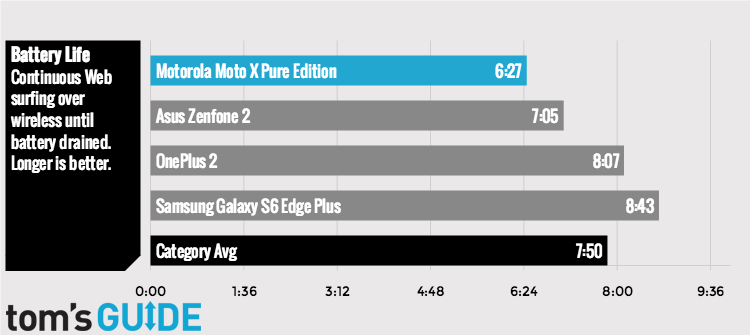
Fortunately, the Pure is part of the new school of smartphones that can quickly recharge thanks to their TurboPower technology. Motorola is claiming the device can restore 10 hours of battery life in 15 minutes, provided you have the appropriate TurboPower25 charge, which is sold separately ($34.99). Still, the phone's fast-charging capabilities do take a small amount of the sting out of the short battery life.
Bottom Line
The Pure Edition retains the high level of customization Moto fans have come to know and love as well as intuitive Moto features such as Voice and Display. I appreciate the larger display and the bump-up in resolution as well as the improved camera. But the best thing about the Pure Edition is its relatively low entry price ($350) for an unlocked device that can work on all the major carriers. Compare that to the Samsung Galaxy S6 Edge Plus ($768 unlocked on Verizon), and you feel like you're getting a steal.
However, the Pure's mediocre overall performance and short battery life prevent me from giving this phone a higher rating. Motorola will also have to go back to the lab on the low-light shots. Among unlocked phones, the OnePlus 2 offers better performance and battery life for a palatable $389, and ounce for ounce, the Samsung Galaxy S6 Edge Plus remains the phone to beat. But the Moto X Pure Edition is a solid gateway drug into the world of flagship smartphones.
Sherri L. Smith has been cranking out product reviews for Laptopmag.com since 2011. In that time, she's reviewed more than her share of laptops, tablets, smartphones and everything in between. The resident gamer and audio junkie, Sherri was previously a managing editor for Black Web 2.0 and contributed to BET.Com and Popgadget.

